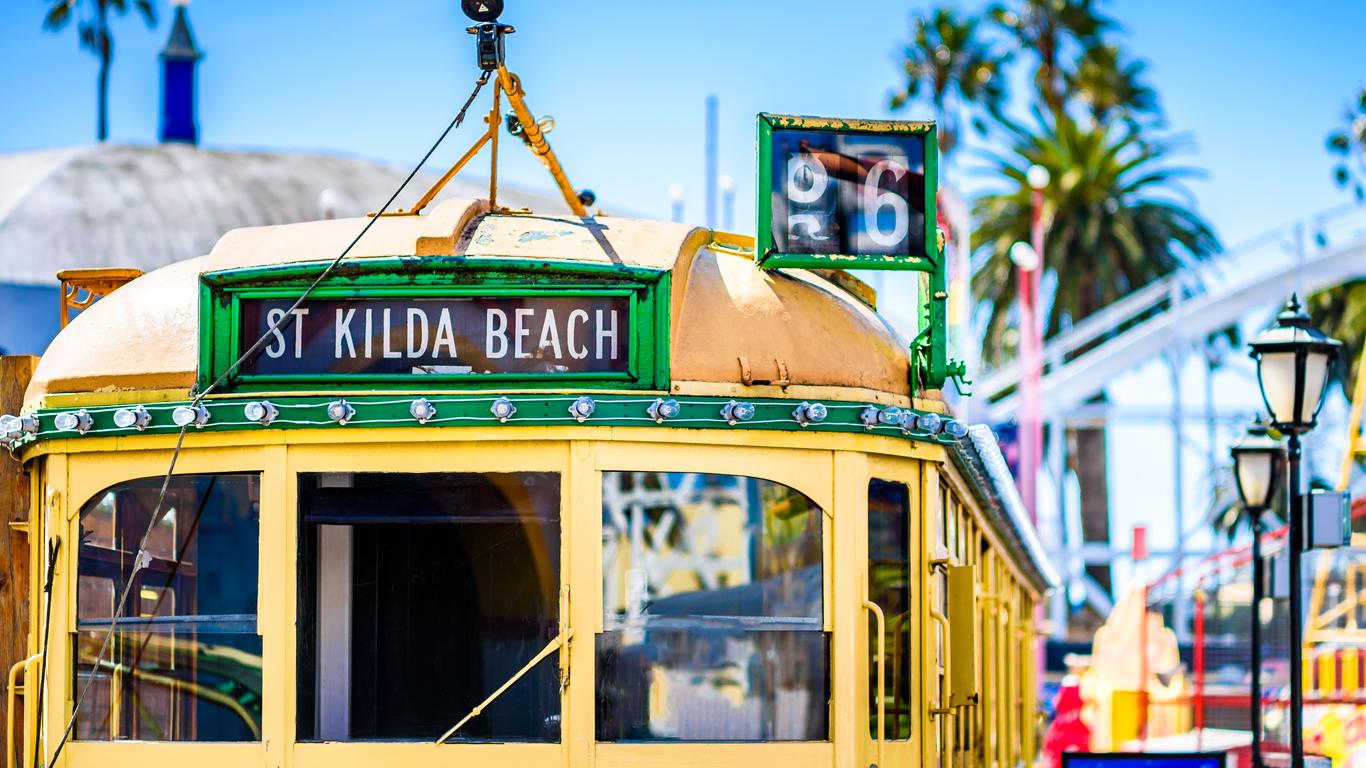Home to Melbourne’s most famous strip of sand, together with the amusement rides of Luna Park and the iconic Esplanade Hotel, St. Kilda has long been a popular weekend playground. Its history reflects that of New York’s Coney Island and combines with a vibrant cafe culture, live music scene, with a handful of interesting arts festivals to be one of the city’s most energised suburbs today.
St. Kilda emerged in the late 19th century as a popular address for Melbourne’s elite, with Victorian and Edwardian-era mansions built along its waterfront and towering hills offering a rich legacy. In the post-World War I years, it’s low-cost housing saw it transform into Melbourne’s premier red-light district, and later a bohemian hub for prominent artists, writers and alternative cultures that still resonates today. The annual St. Kilda Festival brings together comedians and musicians from across the globe, while the weekly Sunday Esplanade Arts and Craft Market exhibits the work of local artisans. The Esplanade Hotel, Palais Theatre and Prince Bandroom have all played an influential role in Melbourne’s live music scene, providing venues for some of the country’s biggest names, while the lively streets of Fitzroy and Acland are packed with eccentric cafes, restaurants, boutiques and independent music and book shops. Soaking up the sun on St. Kilda Beach is an essential part of any visit, with the heated spas and pool of the historic St. Kilda Sea Baths offering a glimpse back at the suburb’s golden days, while little penguins can often be spotted off the St. Kilda Pier.
The best way to get from Melbourne’s city centre to St Kilda is by tram, with numerous different routes departing from Swanston, Bourke and Collins Streets. The suburb itself is easily explored on foot, with St. Kilda’s shops, cafes and restaurants all just a short walk from the beach.
St. Kilda has a rich indigenous heritage, with evidence of the Kulin people inhabiting the area for up to 40,000 years exhibited in its shellfish middens, huts, and a historic corroboree tree which still stands at the corner of Fitzroy Street and Queens Road. Following European settlement in the mid 19th century, St. Kilda was home to Melbourne’s first quarantine station, before becoming a popular residential area for Melbourne’s wealthy.





